Other than asteroid strikes and atomic bombs, there is no more destructive force on this planet than water.
But Oregon’s message to its residents seems clear: we are turning our backs on danger; we are turning our backs on the future; we are turning our backs on you.
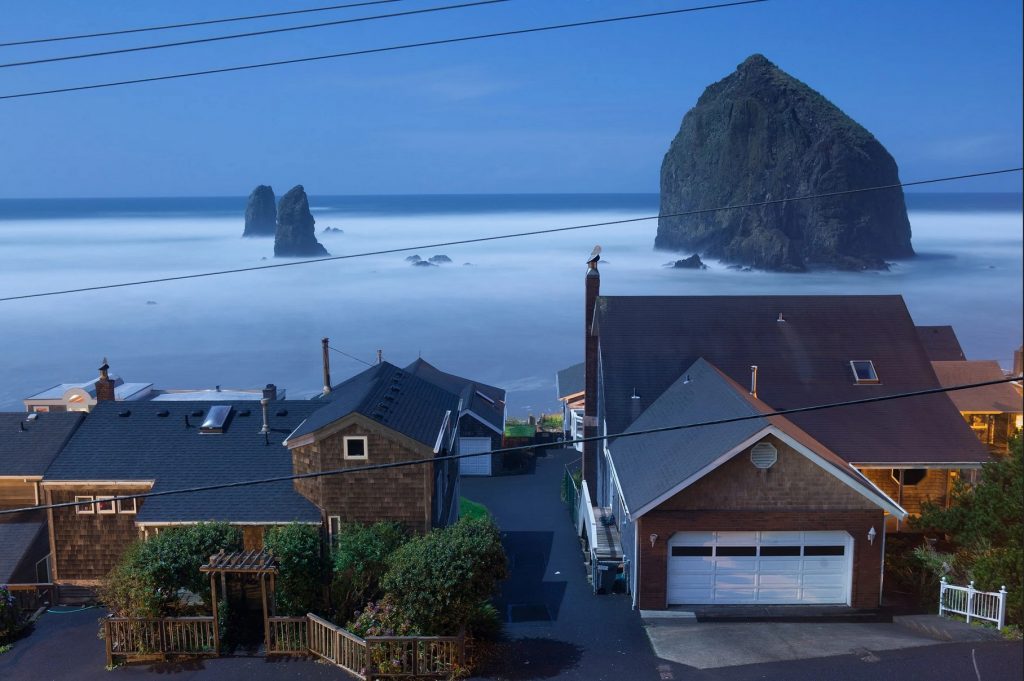
Six inches of it, flowing at a mere seven miles per hour, will knock a grown man off his feet. Two feet of it will sweep away most cars.
Two cubic yards of it weighs well over a ton; if that much of it hits you at, say, twenty miles per hour, it will do as much damage to your body as a Subaru.
In rough seas, a regular ocean wave can break with a force of two thousand pounds per square foot, more than enough to snap a human neck.
A rogue wave — one that is more than twice the height of those around it — can sink a nine-hundred-foot ship.
Keep scaling up the water, and you keep scaling up the trouble. Eight years ago, a tsunami struck the northeast coast of Japan.
A tsunami is not like a regular wave, and it is not like a rogue wave; it is more like a rogue ocean. It forms, most often, when an earthquake shifts the seabed and displaces all of the water above it.
That displaced water does not crest and fall; it simply rises, like an extremely high tide, until the entire water column is in motion, from seafloor to surface.
Then it rolls inland, with ten or twenty or sixty miles of similar waves at its back, and demolishes everything in its path.
The tsunami that struck Japan swept over eighteen-foot protective barriers, rushed through towns and cities, and tore them apart, so that those towns and cities became part of the wave, cars and trucks and warehouses and real houses swirling in the water.
It reached a hundred and thirty feet high at its apex, travelled up to six miles inland, and killed almost twenty thousand people.
Seven years earlier, a similar tsunami rose up out of the Indian Ocean on the day after Christmas, poured outward to India, Sri Lanka, Thailand, and Indonesia, and left more than two hundred and eighty thousand people dead.
Cascadia Sizzle from NVS on Vimeo.
Four years ago, I wrote an article for this magazine about a little-known fault line just off the coast of the Pacific Northwest that periodically produces earthquakes of magnitude 9 and greater — which, in turn, produce tsunamis equal in enormity to those that struck Indonesia and Japan.
When that fault line next unleashes a full-scale quake, it will affect some hundred and forty thousand square miles of the West Coast.
The impact of the tsunami, meanwhile, will be more localized but more thoroughgoing: it will obliterate everything inside a skinny swath of coastline, seven hundred miles long and up to three miles deep, from the northern border of California to southern Canada.
That region is known as the tsunami-inundation zone, which is exactly what it sounds like: the area that, according to seismologists, will be completely underwater when the wave arrives.
Oregon Governor overturns law
Last year, the governor of Oregon signed a law that, among other things, overturns a 1995 prohibition on constructing new public facilities within the tsunami-inundation zone.
When the law, known as HB 3309, goes into effect, municipalities will be free to build schools, hospitals, prisons, other high-occupancy buildings, firehouses, and police stations in areas that will be destroyed when the tsunami strikes.
Put differently, the law makes it perfectly legal to use public funds to place vulnerable populations — together with the people professionally charged with responding to emergencies and saving lives — in one of the riskiest places on earth.
That is not an exaggeration. If there is anything that my reporting on the Cascadia subduction zone made horrifyingly clear, it is that, when the tsunami hits, virtually nothing and almost no one within the inundation zone will survive.
There aren’t many injuries in the tsunami zone. People just die. Those who are in it when the earthquake starts will have just ten to thirty minutes to evacuate.
That quake will leave people in the inundation zone injured, in shock, and anxious to ascertain the safety of their colleagues, friends, and loved ones.
In that condition, they will need to escape damaged or destroyed buildings and make their way to higher ground, despite crumpled roads, collapsed bridges, downed electrical lines, and all the secondary disasters an earthquake can trigger, from power outages and fires to landslides and liquefaction.
All that is bad enough. But when you factor in the kinds of obstacles that HB 3309 renders inevitable a timely evacuation becomes next to impossible. Yet those who do not make it out of the inundation zone will not make it, period.
Condemned to death by drowning
When the tsunami hits the Oregon coast, it will be, at its lowest reaches, twenty feet high, and moving somewhere between ten and twenty miles per hour.
Whatever the supporters of HB 3309 would have you believe, or are trying to convince themselves to believe, the fact of the matter is that, if schools and hospitals and prisons are built in the inundation zone, some of their occupants will still be there when that wave hits, and those who are will not survive.
Schoolkids will die, together with their teachers. The sick and the injured will die, together with any hospital workers who stay to try to help them. As for the incarcerated, regardless of what sentences they are meant to be serving, they will be condemned to death by drowning.
Meanwhile, by allowing police stations and firehouses to be built within the inundation zone, Oregon is directly endangering the people tasked with showing up when disaster strikes.
Even if first responders who are based in the inundation zone are able to evacuate, their equipment will be destroyed, leaving communities without the fire trucks and ambulances that they will so urgently need in the aftermath of the catastrophe.
The same goes for putting hospitals in the inundation zone: in addition to gravely endangering all the patients, family members, and employees who are in them when the tsunami strikes, it means that, after the ground has stopped shaking and the water has receded, there will be no functioning medical facility to receive the injured and no advanced medical equipment on hand to help save lives.
Why did they change the law?
How did a law with such high stakes sail through the Oregon legislature?
One answer is that HB 3309 was passed without any public input or formal debate. According to Jay Wilson, the current resilience coordinator for Clackamas County Disaster Management and a former chair of the Oregon Seismic Safety Policy Advisory Commission, even relevant state entities, O.S.S.P.A.C. included, were either discouraged or prevented from participating.
The only public testimony came from the members of the Oregon Legislative Coastal Caucus, all but one of whom supported repealing the law.
Indeed, some observers suspect that the law was largely designed to discredit and further defang the already underfunded DOGAMI, the state entity that has done the lion’s share of work in mapping the tsunami-inundation zone and trying to keep critical infrastructure and vulnerable citizens out of it.
Constructions code in tsunami-inundation zone
To survive a tsunami in the inundation zone, you need a multimillion-dollar building constructed to the highest possible safety standards. But HB 3309 does not mandate that new buildings in the inundation zone meet those standards.
That’s probably because any genuinely useful building code would roughly double the price of construction.
Next solution is evacuation
Who will buy a house in a neighborhood too dangerous for a police station? Who will start a business in an area where fire stations are not allowed?
Who would deliberately endanger their police and firefighters in order to lure homeowners and businesses to an area that’s known to be so unsafe?
No matter how you crunch the numbers, it’s impossible to imagine any road to financial security that runs through the inundation zone.
An option is simply to start moving citizens and infrastructure out of harm’s way. Because, in the next fifty years, Oregon faces a one-in-three chance of experiencing a tsunami comparable to those that recently devastated Japan and Indonesia.
But Oregon’s message to its residents seems clear: we are turning our backs on danger; we are turning our backs on the future; we are turning our backs on you.
More than eight decades ago, Robert Frost, that least sentimental of poets, conjured an everyday beach scene, happy and holiday-ish on its surface, full of people sprawled on the sand and gazing out toward the sea.
Like so many of his poems, this one carries on for a while with deceptive simplicity, calmly taking in the terrain, pausing now and again to admire a seagull or a ship.
But Frost, as he always did, saw through the daily condition to the existential one, and the poem ends, by reminding us of our terrible shortsightedness:
They cannot look out far.
They cannot look in deep.
But when was that ever a bar
To any watch they keep?
This amazing text abour Oregon’s tsunami risks was written by Kathryn Schulz for The New Yorker. More devastating tsunami news and headlines on Strange Sounds and Steve Quayle.


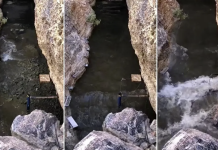
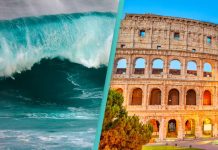

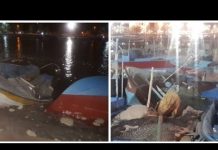

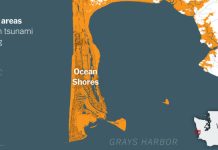
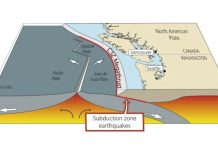
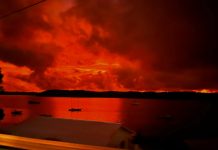
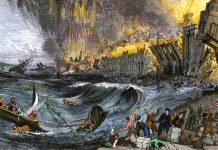

If Oregon major 9.2 plus happens sooner than later with COVID -19 all North west will be a war zone?